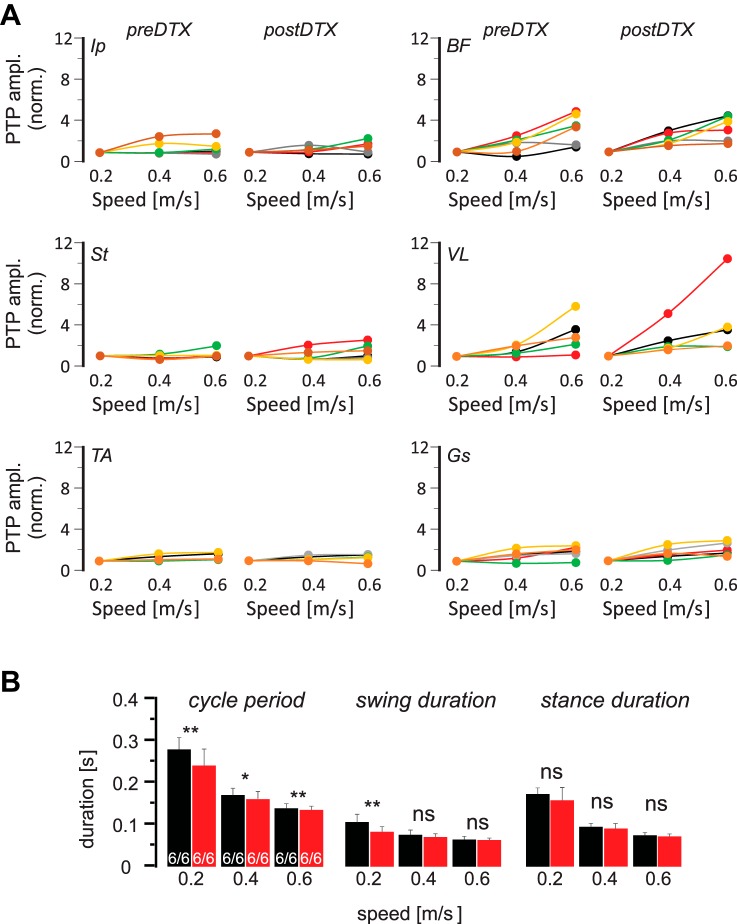Fig. 12.
Decline of speed-dependent amplitude modulation is not statistically significant in any muscle after acute removal of muscle spindle afferents from the quadriceps femoris (QF muscles. A: maximal electromyogram activities (peak-to-peak amplitude, PTP ampl.) in all recorded flexor (left) and extensor (right) muscles, normalized to the maximal activity at all 3 walking speeds in individual (color coded) Pv::cre mice in which QF muscles were infected with adeno-associated virus before and after diphtheria toxin (DTX) injection. Based on the paired t-test, amplitude modulation did not change significantly change after DTX injection. B: means and SD of step cycle period, swing duration, and stance duration at 3 different walking speeds before (black) and after (red) DTX injection indicates that after DTX injection, cycle period decreased at all speeds whereas swing duration only decreased at 0.2 m/s. No change could be detected in stance duration at any speed. *P < 0.05; **P < 0.01; ns, not significant (after paired t-test). Ip, iliopsoas; BF, anterior biceps femoris; St, semitendinosus; VL, vastus lateralis; TA, tibialis anterior; Gs, gastrocnemius.

